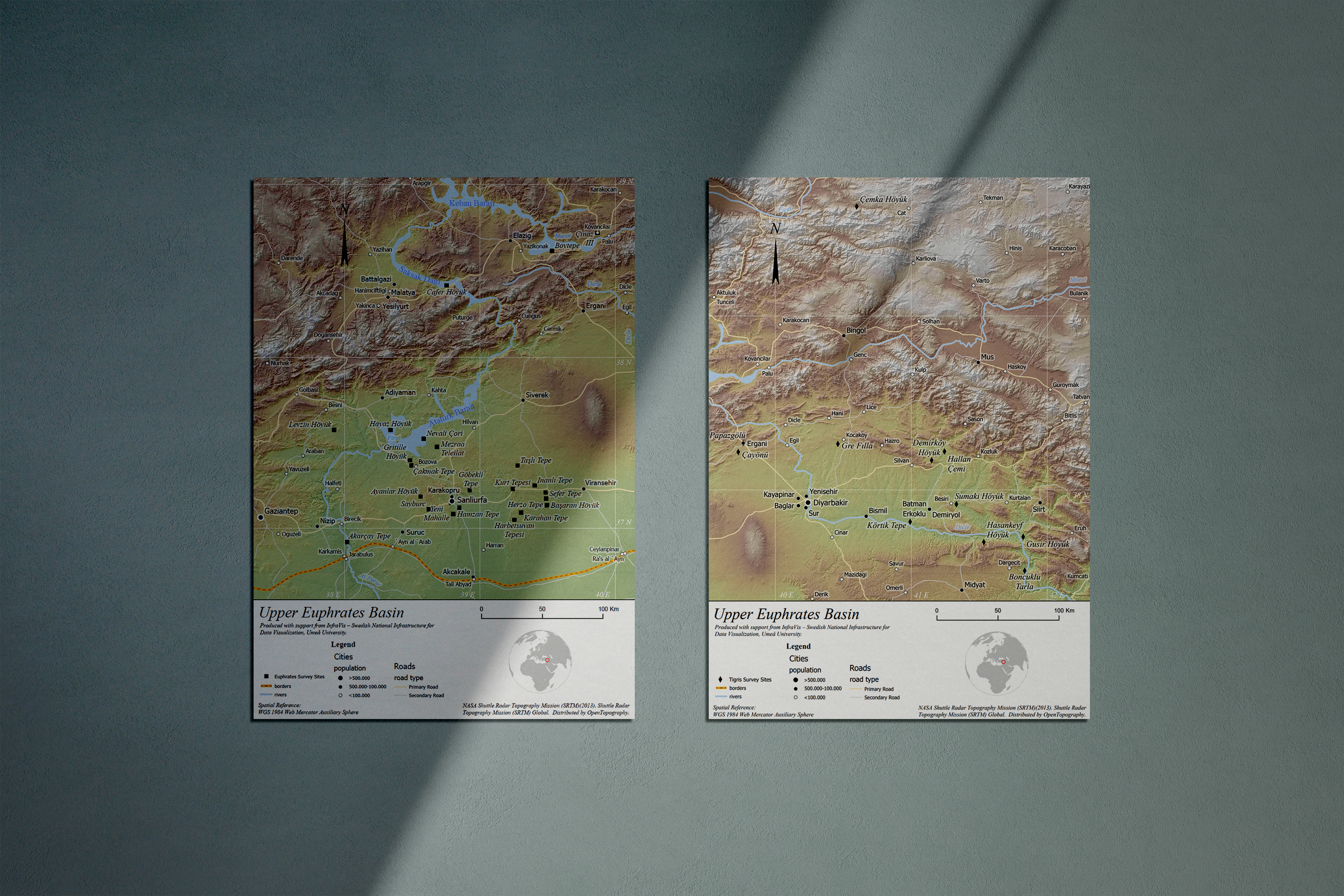
GIS visualization of archaeological sites in the upper Tigris and Euphrates River basins
InfraVis User
Ing-Marie Back Danielsson
Yasemin Menemenli
InfraVis Application Expert
Dimitrios Staikoglou (UMU)
InfraVis Node Coordinator
Maria Podkorytova (UMU)
Tools & Skills
GIS, ArcGIS Pro, Adobe Illustrator, Adobe Photoshop, Adobe Capture
Keywords
maps, archaeology, GIS
Background
The project’s primary objective was to develop a GIS-based visualization (printed maps) of archaeological sites located in the Upper Tigris and Euphrates River basins. The work reveals the transition from hunting-gathering to farming lifeways in this region. The visualization aims to integrate archaeological, environmental, and material culture data to provide a spatial understanding of human-environment interactions during this significant cultural shift. Data on case study sites locations on the South Levant area and Cyprus were also visualized. Additionally, diagrams demonstrating the chronological placement of the material culture on three case study locations in the Upper Tigris River basin were created.
Data Preparation and Integration
Excel datasets containing spatial and descriptive information were received from the callers, including site coordinates, environmental conditions, and archaeological findings such as tools, architectural remains, and animal species consumed. These datasets were cleaned and organised to be imported to ArcGIS Pro.
GIS Mapping and Visualization
The spatial data was visualized using ArcGIS Pro and the 3D Analyst extension. Elevation and environmental layers were supplemented with data from the SRTM (Shuttle Radar Topography Mission). Final design details were added using Adobe Illustrator for text and symbology elements, along with other Adobe software for refinement.
Final Outputs
The results consisted of a series of printed maps illustrating the archaeological datasets and spatial patterns explored in the research of transition from hunting-gathering to farming lifeways conducted by Yasemine Menemeli under the leadership of Ing-Maria Back Danielsson.

